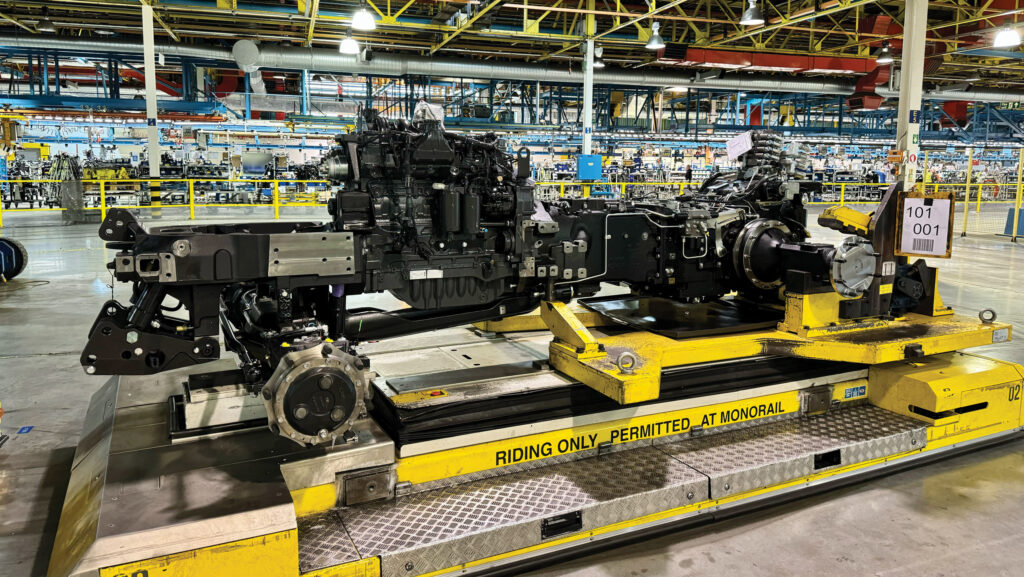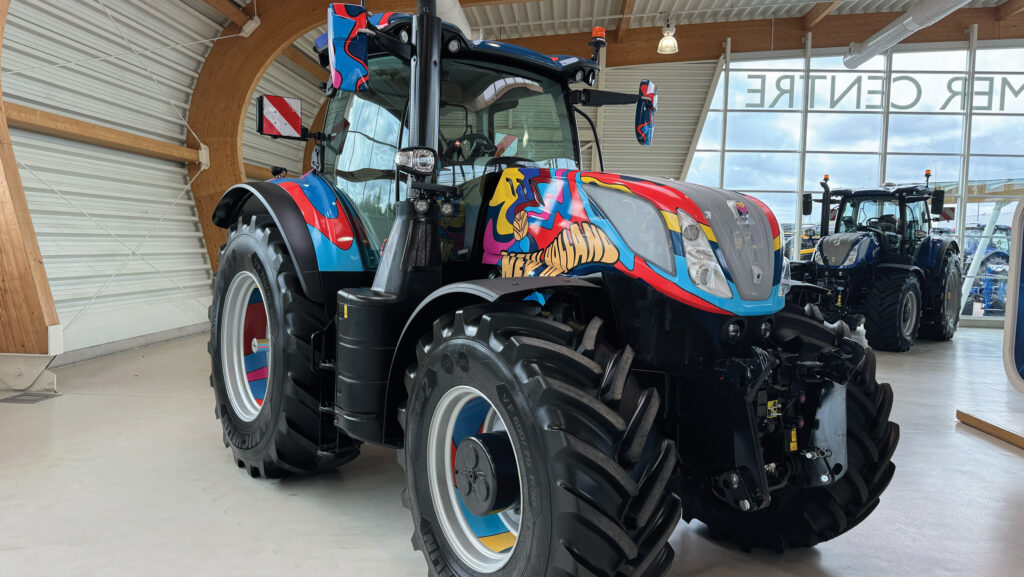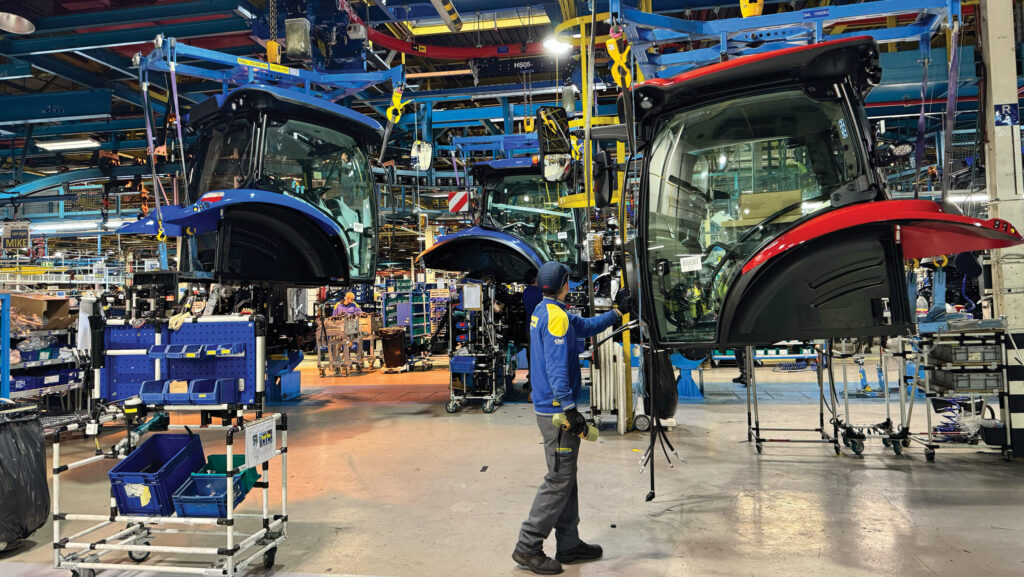New Holland set to build two-millionth tractor at Basildon
 © MAG/Oliver Mark
© MAG/Oliver Mark New Holland has unveiled a psychedelic, 1960s-inspired T7.300 wrap to mark 60 years of tractor production at its Basildon factory.
The 40ha south Essex site, which has been the birthplace of some of Ford and New Holland’s most iconic models, is also on course to build its milestone two-millionth tractor in July.
Bestsellers over the years include Ford’s 3000, 4000 and 5000, the legendary 7810 – of which some 30,000 were produced – and, since 2011, the New Holland T6 and T7 ranges.
See also: Day in the life: New Holland worker

© MAG/Oliver Mark
At one time, it employed 3,500 people to manufacture 500 engines and 300 tractors every day.
But farm machinery production is now a global affair, and the company has established specialist satellite facilities dotted across Europe to supply ready-to-fit components.
These include engines from Turin, Italy, transmissions from its factory in Antwerp, Belgium, which was once the home of the Ford TW-series, and fully glazed cab shells from northern France.
Such streamlining has allowed CNH to pare back the workforce, with just 600 staff now manning an assembly line that churns out one tractor every five minutes, 73 a day and 14,000 a year. Each takes a little under two days to piece together.
These are purely 140-300hp T6s and T7s, including Methane Power derivatives and Case IH versions for export to North America.

© MAG/Oliver Mark
Basildon-built tractors
- 1964 Ford 3000, 4000 and 5000
- 1971 Ford 7000
- 1975 Ford 2600-7600. First Q-cab
- 1982 Ford Series 10
- 1991 New Holland Series 40
- 1996 M/60-series
- 1998 TS-series
- 2000 TM range
- 2003 TS-A range
- 2007 T7000 and T6000
- 2011 T7 and T6 range
- 2021 T6 Methane Power
Popular models
Ford tractor production shifted from Dagenham to Basildon in 1964. That marked the end of the Fordson marque and the introduction of the first Ford-branded models – the 37-65hp 6X tractor series, comprising the 2000 Dexta, 3000 Super Dexta, 4000 Major and 5000 Super Major.
Then, in 1971, came the Ford 7000-series and its turbocharged engine, the 37-97hp 7A1 600-series in 1975, and the 7A2 versions with quiet “Q cab” the following year.
In 1981, these tractors were updated to Series 10 specification, then later to Force II (1986) and Generation III (1989).
By late 1991, the 75-125hp 40-series had been launched with the firm’s in-house Powerstar engine and an Electro Command transmission.
More than 100,000 40-series tractors were built, some of which adopted the New Holland badge; the last Ford-branded tractor left the factory in 1994 – three years after Fiat’s acquisition of the company.
Then, in 1996, came the 100-160hp 60-series, which was available in blue or terracotta, the latter in Fiatagri M-series guise. These were followed by the TS in 1998 and, two years later, the TMs.
For the the past couple of decades, production has centred around the TS-A (2003), the T6000 and T7000 (2007), and, since 2011, the T6 and T7 ranges.
In 2021, the plant gained a dedicated sub-assembly area for production of the T6.180 Methane Power.

